Using a regeneration lens, mine waste becomes a resource
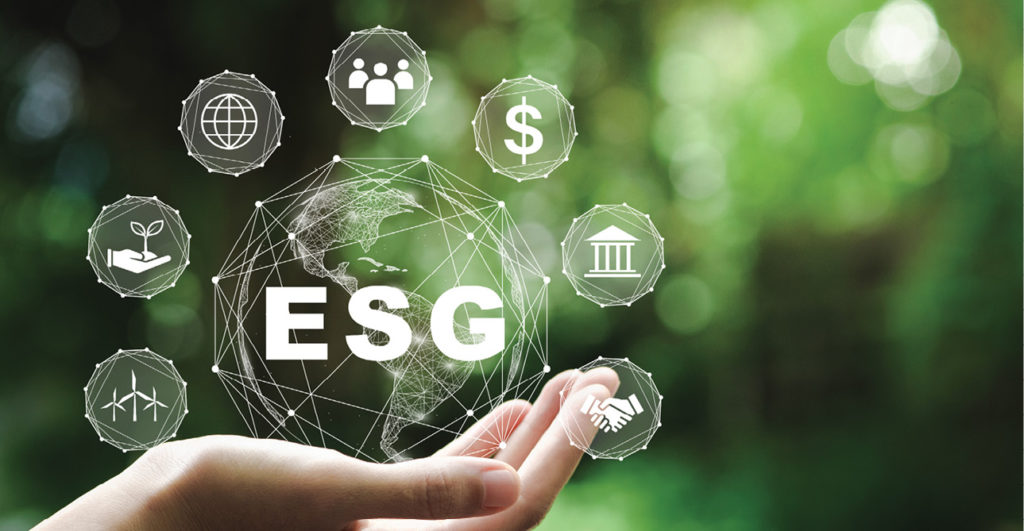
Regeneration of previously mined sites presents opportunities to turn waste into a resource, create nature-based solutions and better closure outcomes. Waste from past mining contains metals like cobalt, lithium, copper, platinum, and tellurium. This mine waste can help fuel the energy transition and meet the responsible sourcing requirements of green tech and sustainable brands.
Leaders in industry, government, and civil society can now view impacted, brownfield sites differently. Not just as tailings, waste rock, and wastewater to be managed for risk, but as a potential source of metals and an opportunity for nature-based solutions; whether sites are abandoned, closed, and held as liabilities by operating companies, or active operations.
There are three reasons the time is right to re-think mining waste and mine sites:
1 Demand linked to the energy transition. The World Bank projects that we will need over 3.0 billion tonnes of minerals and metals to deploy the wind, solar, and geothermal power, as well as energy storage, required to achieve a climate target of less than a 2°C increase.
2 Technology innovation. Innovation in mine waste processing is exploding, both tested and new technologies can be used to re-mine waste and address pollution.
3 The need to find more land for nature-based solutions to meet our biodiversity and climate goals. The benefits that can accrue from restoring degraded sites is significant; we can create quantifiable, green outcomes in the form of biodiversity and carbon credits.
New business models that put community first
In November 2021, we launched Regeneration, a start-up focused on re-mining and restoration, to seize this opportunity and put community first. To be successful, re-mining projects will need to prove themselves commercially and, in addition to permits, they’ll need a community license to operate.
Because many of these brownfield sites are in areas that have experienced negative impacts from past mining activities, we see an opportunity to reset and improve community relationships. In this context, new business models, especially those that depend on both a community and commercial bottom-line, are an asset. As a public benefit company, Regeneration is an example of such a model, the company itself is part of the innovation.
We blend NGO and commercial thinking, and we draw on experts from both sectors. We have a community and a commercial bottom line. We form innovative partnerships with community organizations and businesses. We link upstream sites to downstream brands and consumers.
When we are assessing potential Regeneration sites, we focus first on restoration outcomes. When we identify a restoration opportunity, we then work together with the community to build a closure vision. With this approach, re-mining is a means to better community, conservation, and climate outcomes.
Our social impact business model can constructively disrupt the status quo, addressing liability risk and using revenue generated from re-mining and other sources to support restoration and provide community benefits. While a pure commercial actor may require a corporate driven rate of return, we can proceed with a site if the total restoration and re-mining potential pencils out, in some cases it may simply need to break even.
The Salmon Gold precedent
Before we launched Regeneration, we tested this model on a smaller scale with placer mining in Alaska and the Yukon. Based on this experience, Resolve (Regeneration’s sister NGO), launched Salmon Gold (a project to put biodiversity positive gold in the supply chains of Apple and Tiffany by re-mining placer tailings and restoring stream habitat for salmon and other anadromous species). Apple & Tiffany kick-started the project with initial funding for Resolve to develop the business model, scout and assess the sites, and help fund restoration at the first projects. They purchased Salmon Gold which is now in their products. We worked together to tell a story in the marketplace. From this experience we know that the market wants differentiated mineral products where possible and restoration credits.
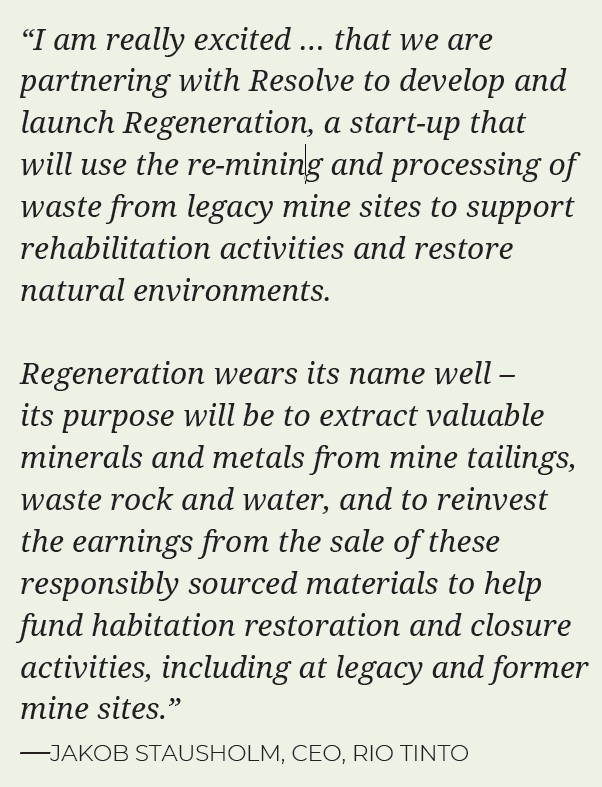
Full value mining for a healthier industry
The past impact of mining is an issue in many communities and the trend is for community leaders to seek solutions to these legacy issues before new mines advance. They want new mine developers to address past problems and support positive restoration outcomes. This is typically outside of the commercial purpose of mining companies seeking to develop new projects, but it’s in the DNA of Regeneration.
Where we find community, restoration and remining solutions, the industry balance sheet also improves, both financially and reputationally. In this way, Regeneration is delivering a public good.
A concept that underpins Regeneration is full value mining – the idea that when we mine, given the impact and infrastructure costs, we should do our best to extract everything and ensure full use of the natural resource. When applied to past mining, especially at older sites, where processing was less efficient, the opportunities that can result from thinking this way are significant. Already, we see mining majors and others, including our equity partner Rio Tinto, advancing full value mining, essentially a circular economy concept, at operating sites. As an example, Rio Tinto is producing scandium from titanium dioxide waste streams and tellurium as a by-product of copper production in two of its operations in North America. We encourage this.
Regeneration is working with several other mining companies to assess these opportunities at closed sites and active mines.
Abandoned sites are strong candidates for full value mining (and full value re-mining) too. Abandoned and orphan sites sometimes sit stagnant due to prohibitive liability issues. Work at abandoned sites will take policy innovation and funding creativity, but the upside is significant. Together, these sites should be an early source of new critical minerals production and nature-based solutions. This could also benefit governments that are looking to showcase progress on 30 x 30 commitments.
A new basket of mine site products
We see a future where closed mine sites contribute to a basket of sustainable products – differentiated minerals that fuel the energy transition; biodiversity and carbon credits; site liability reduction; and restored sites that support a community’s vision for post-remining land uses and values.
Stephen D’Esposito is the founder and CEO, Regeneration. He is also the president of Resolve.
This article has two parts. In part II,
we will explore Regeneration’s approach
to technology, site strategies, and policy innovation.
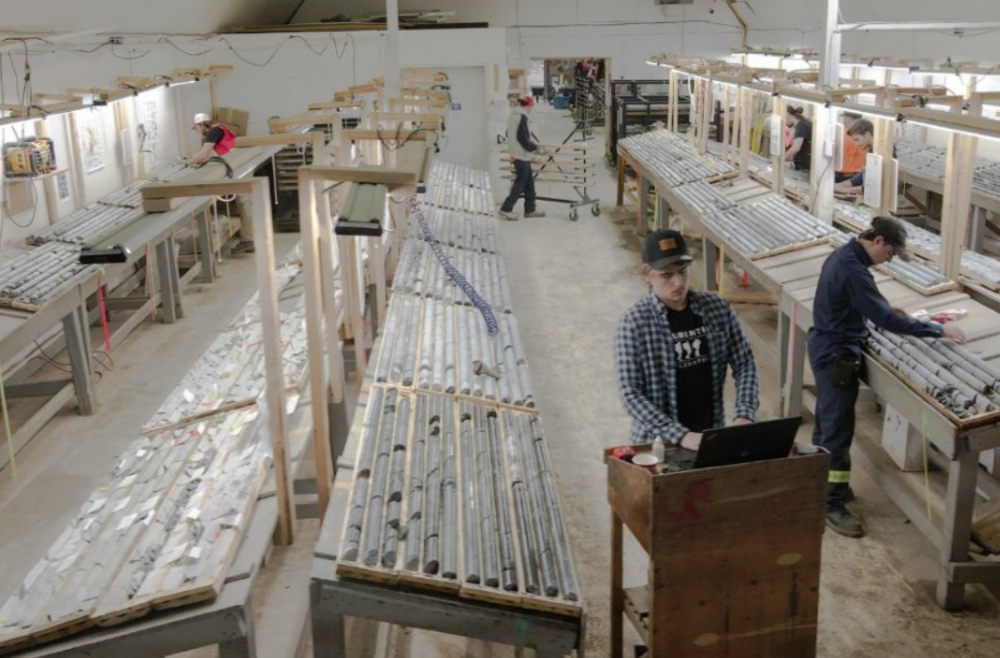
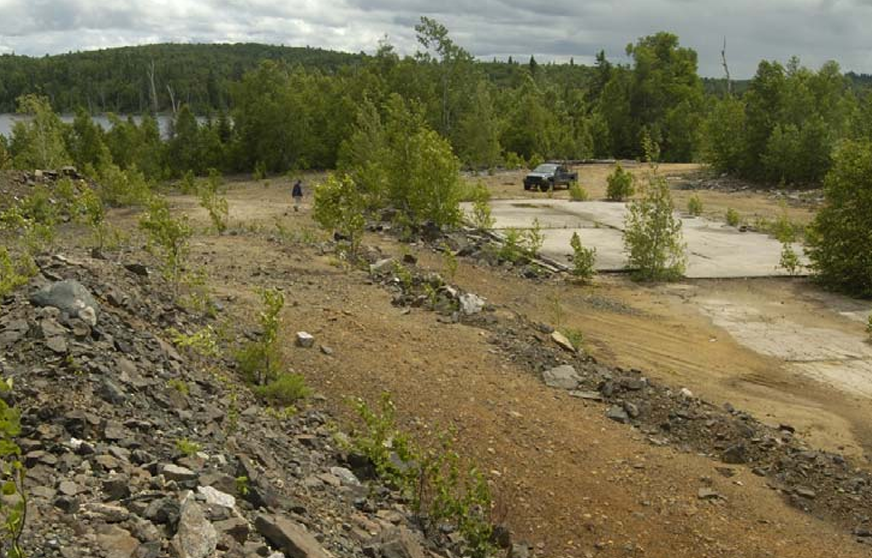

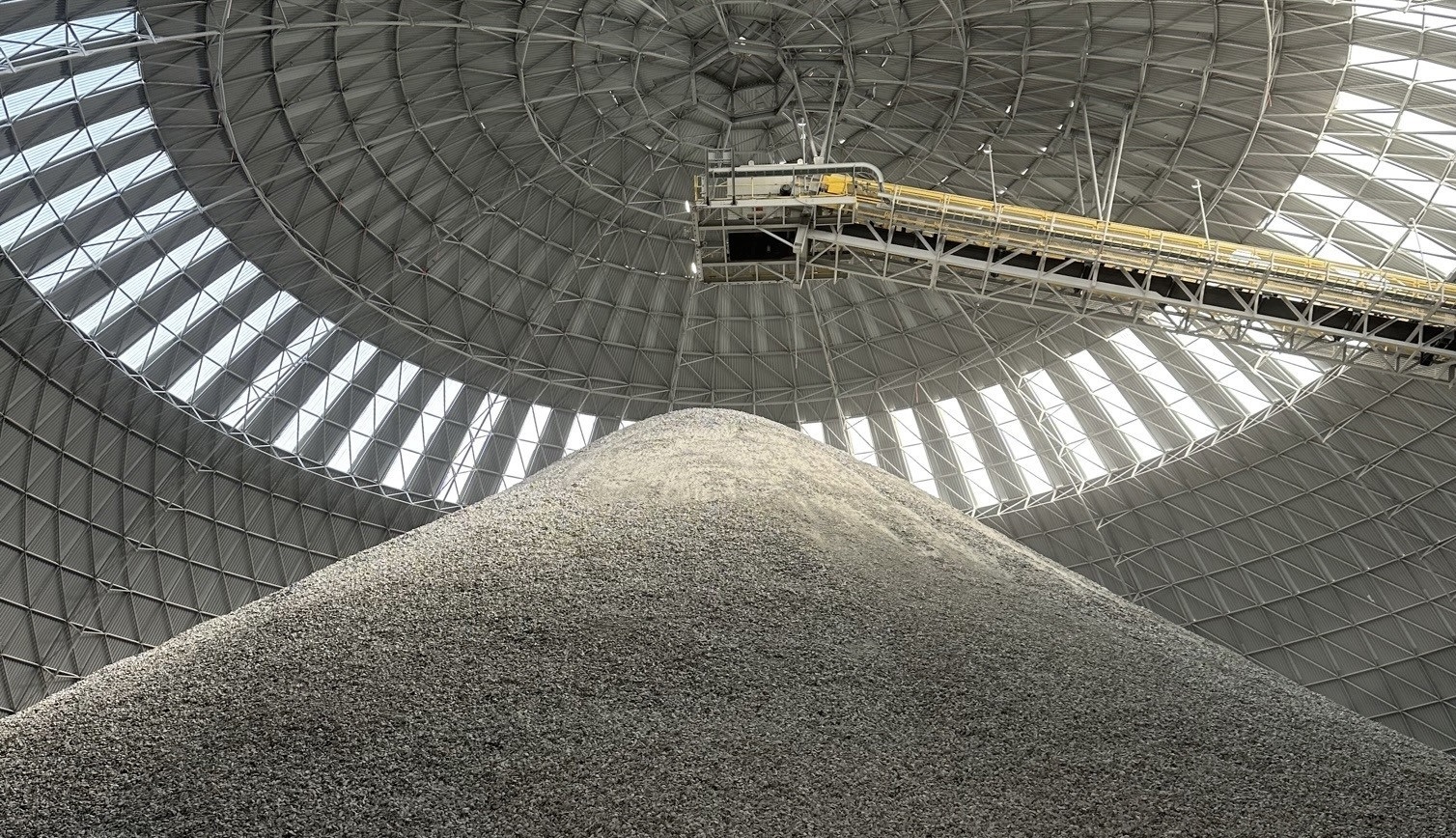
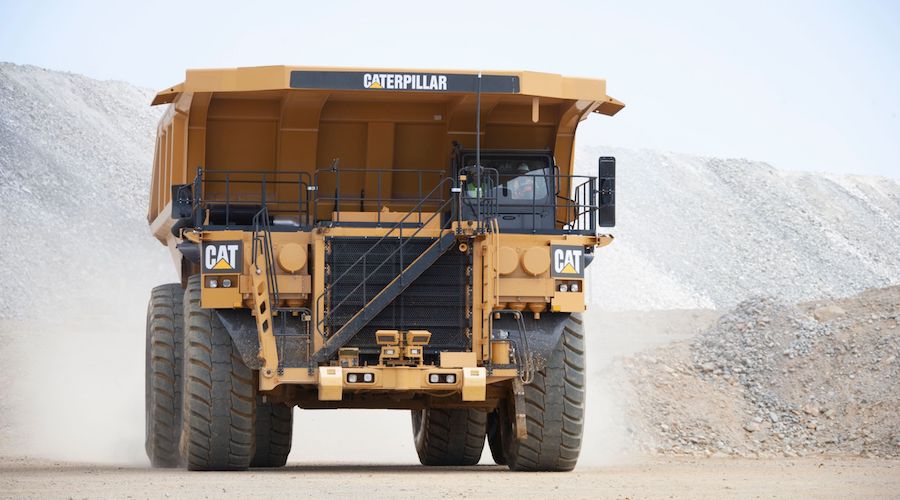
Comments